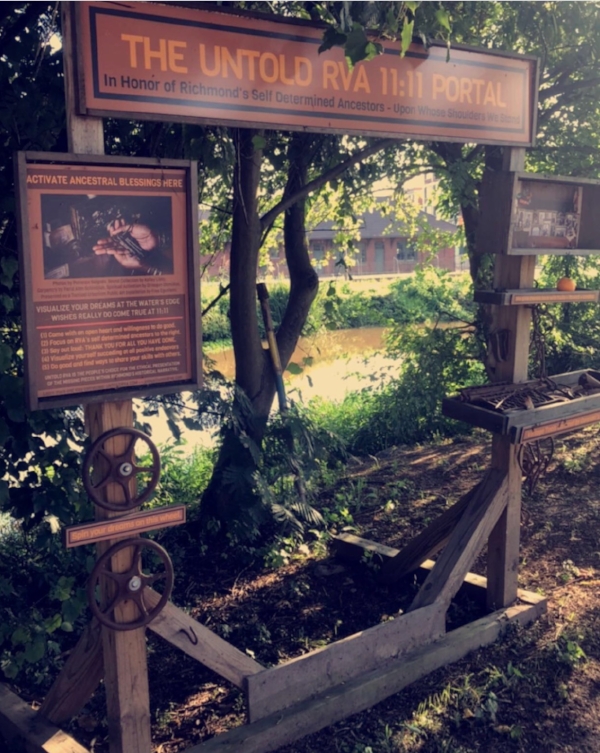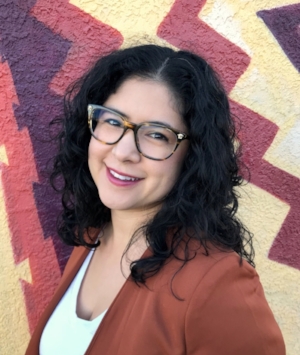By Arlene Goldbard, Chief Policy Wonk
This is the final installment in a series of blogs profiling the USDAC’s Policy Prototype projects, seven projects across the U.S. receiving micro-grants to document their work related to the proposals in “Standing for Cultural Democracy: The USDAC’s Policy and Action Platform.”
Lisa Jo Epstein applied for a one-time Policy Prototype micro-grant as the leader of Just Act, a theatre-based catalyst for healing change and activism with the mission of build a just world. The work is rooted in the principles of Theatre of the Oppressed and other arts-based methods to ignite critical thinking and unite community members for collective action.(Read more on their Facebook page.)
The original idea was to integrate arts-based approaches into the Philadelphia Planning Commission's Vision 2035 NW Philly planning process, building on a “successful multi-generational, resident-driven story and theatre-based pilot project we created with and for Germantown United Community Development Corporation.” The proposed project would once again bring together local residents “who were trained in generative listening, story-circles, community-driven story analysis, and Just Act's performance "gift-back" technique, and who facilitated community events,” acting as a kind of bridge between planners and the community, using stories and documentation to let planners know what Germantown residents want.
The proposal was inspired by Platform point 6: “Integrate community cultural development and the work of artists into all social programs affecting culture.” As Lisa Jo’s proposal noted, Just Act would be “incorporating our art skills and experience into a community development process that normally shies away from intensive community in-reach. Community developers have told me that they don't have the time to get involved in 'that kind of thing'—let alone creative strategies for engaging residents,” a problem that will be familiar to many who work in community-based arts and culture.
A participant in Southwest CDC’s Art Powered Places Vision Tree Session
An underlying aim of Just Act’s Policy Prototype project was to “use the arts to hold CDCs and City Planning accountable to residents,” working to ensure that decisions affecting a neighborhood were shaped by residents. Like all of the projects in the Policy Prototype series, the idea was to offer a model, in this case for planning commissions and community development folks in Philadelphia and beyond to integrate arts-based planning methods into their ongoing practice.
As Art-Powered Places evolved, the project shifted from its original location to encompass more territory. The resulting partnership with the Philadelphia Association of CDCs (PACDC) was created to “introduce creative placemaking to four Philadelphia Neighborhood Advisory Committees (NAC) through a hands-on, arts-based curriculum. The participating NACs were: Brewerytown/Sharswood, Hispanic Association of Contractors & Enterprises (HACE), Mt. Vernon Manor, and Southwest CDC.” Just Act conducted four art-based training and technical assistance sessions at each site—for example, using theater exercises to elicit imagination—allowing “each community action group to develop their own, unique understanding of their neighborhood’s needs, and then begin to plan possible future projects of their own imagination to transform where they live into places of equity and wholeness.”
When we spoke, Lisa Jo explained that the timing was key. The communities “had just elected a body of people to serve as the constituents of the NAC and we came in at the right moment because we were able to provide a process of how a collaborative group builds their capacity to enhance their skills. Everything was rooted in sustaining the changes that were identified by community members, because equity is the place where we begin. It’s paramount that to assure equity in any creative placemaking project we attend to the people architecture first. We were able to rejuvenate people within their place through creative means, allowing them to uncover their relationships to the place and to each other before attending to any bigger, larger projects.”
Lisa Jo explained that this introduction to art-based strategies had already spread beyond the four original NACs:
For example, Mark Harrell, who was the neighborhood advisory committee coordinator for Southwest CDC, is working with Just Act to integrate arts-based strategies into a big project that HUD and the Philadelphia Housing Authority are doing in Southwest Philly, building a new mixed-income housing development. Because our work transformed their meetings into self-revealing visioning opportunities for the residents to see and identify and experience the power of we, he would like to bring us into the organizing group that is being formed, to be an integral element of the community planning for that project.
I asked Lisa Jo to share something about the ah-ha moments that inspired people who’d been involved in conventional planning approaches to move towards arts-based approaches.
Well, the framework honored in a tangible and visible way the people who were in the room and how they were connected to their place. It led them to new insights into their roles as individuals in relationship to the collective. Our country socializes individuality and not a sense of compatibility and collectivity. So this was an opportunity for them to discover themselves in relationship to themselves and each other. It was a process of engagement that none of the NAC coordinators had ever experienced and they all loved it.
They were sad that we were not able to get the funding to continue it. We only had four sessions at each NAC. There's a lot of trust-building and understanding and embracing the complexity of each group and then utilizing arts-based techniques to respond to emergent needs. They had all risen to a place of readiness, honoring their differences while embracing their shared experiences. It’s hard to have been put on pause because the resident relationships and knowledge and community awareness were really on the upswing.
Here’s how it was put by one of the NAC coordinators. Stasia Monteiro, NAC Program Director for HACE CDC, said that Art-Powered Places
[A]llowed softness in a world where it’s hard to be vulnerable, for in it, we were able to be vulnerable and come to understand our world. The space we created in this process allowed people to reveal their earnest observations of the neighborhood and its people and has given us more deeply relevant knowledge of the challenges we face as we work to grow wellness in our communities.”
In Brewerytown/Sharswood, Lisa Jo explained, people
[M]et at a police athletic center building that has been disinvested from but is brimming with abundance in terms of the people there. One community elder coined the term “the power of we” because they all love the place and sense of place is connected to people, process, and place. So how do memories of the place create a sense of self through people’s individual meaning-making but also the group-level community experience, social identity and self-identity.
From every neighborhood we heard things like “I love this place,” and simultaneously a sense of loss about how the neighborhood has changed. In terms of place, what is the attachment? What is it about the physical space that supports this bond? We heard a lot about neighborhoods supporting community ties; people identified physical sites that supported health and well-being. All together this revealed their sense of place. Using arts-based strategies with primarily non-artists affords the opportunity for them to see that they are creators, that they can make the invisible visible and really embrace the power of their imagination. By increasing awareness of their voices and missing voices and the social isolation that they may have experienced, there was a shift from NIMBY to NIOBY— not in my backyard to not in our backyard.
The NAC team in Brewerytown/Sharswood and their Network Map
The project’s hope was to influence the entire local planning sector, but not everyone was willing to engage. “Although they expressed interest in the idea of the original project, Philadelphia city planners dropped the ball,” Lisa Jo told me, “ But PACDC had previously supported creative placemaking projects in their programming so they welcomed ours as it offered a deeper dive. PACDC just put out their annual magazine and it's focus is on art, equity, and place in relation to community development. They’re working to leverage the momentum that we began, enabling us to complete the pilot with the original four and then facilitate the entire model with four new ones. And the National Alliance of Community Economic Development Associations, who funded PACDC to hire us, are really impressed, seeing this as the future the work needs, building sustainability within CDC communities, primarily lower-income neighborhoods that have been sorely disinvested because of systematic oppression.”
We sought to bring people together across sectors not just for dialogue and expression but to grow new kinds of partnerships, shift both the CDCs and the artists in the neighborhood out of their silos to recognize that they have knowledge and insight when coming together about seemingly impractical challenges, that they are the solutionaries for change.
When the aim is to change people’s idea of what works, documentation can be critical: how do you share an experience the direct participants found transformative with people who weren’t there to experience it? Lisa Jo explained the challenge:
I was able to bring a photographer two times but it’s got to be somebody who's sensitive to community organizing because we're growing the capacity of residents to steward the community's values even as they're figuring out what they value. We have a tiny bit of video from one of the events because one of the participants is a filmmaker. But the tech part is something that continues to challenge as we continue to try to find also the right language for cross-sector partners to understand what we do.
I asked Lisa Jo for advice on building relationships with CDCs to open the door to arts-based work.
It helps that I was the artist who was behind Chester Made and that became quite successful, although we haven't been part of it since the first year. It’s like a dating game, a courtship that has to happen. We've been building a partnership with the CDCs for over a year and they still don’t have the money to scale it up. And it’s hard because we're not a big theater company. But it's really exciting when I listen to the heads of the CDCs and NACs speak on behalf of Arts-Powered Places, to have them be the ones putting the arts-based work on the table and not me as the artist. It's an acknowledgment that this is a tool they want to move forward with.
Lisa Jo’s final tip for Citizen Artists who want to undertake this type of work is to work with a participatory evaluator, someone who understands the essential role of multiple voices and stakeholders in assessing a community-based project. She’s been working on project evaluations with Mary Elizabeth Semerod since 2015, and notes that the Art-Powered Places “plan was a result of our in-depth conversations about neighborhood resilience and what it takes to define a path with the partners, how you build a framework and path work for change. I can't overestimate the impact of that collaboration on this project.”
If you’d like to explore bringing any points in Standing for Cultural Democracy to life in your community, please feel free to contact us at hello@usdac.us. While Policy Prototype micro-grants were a one-time thing, we can still offer technical assistance and help share information with the wider world if you have a project that promotes one of more of the Platform points, so call on us.






































